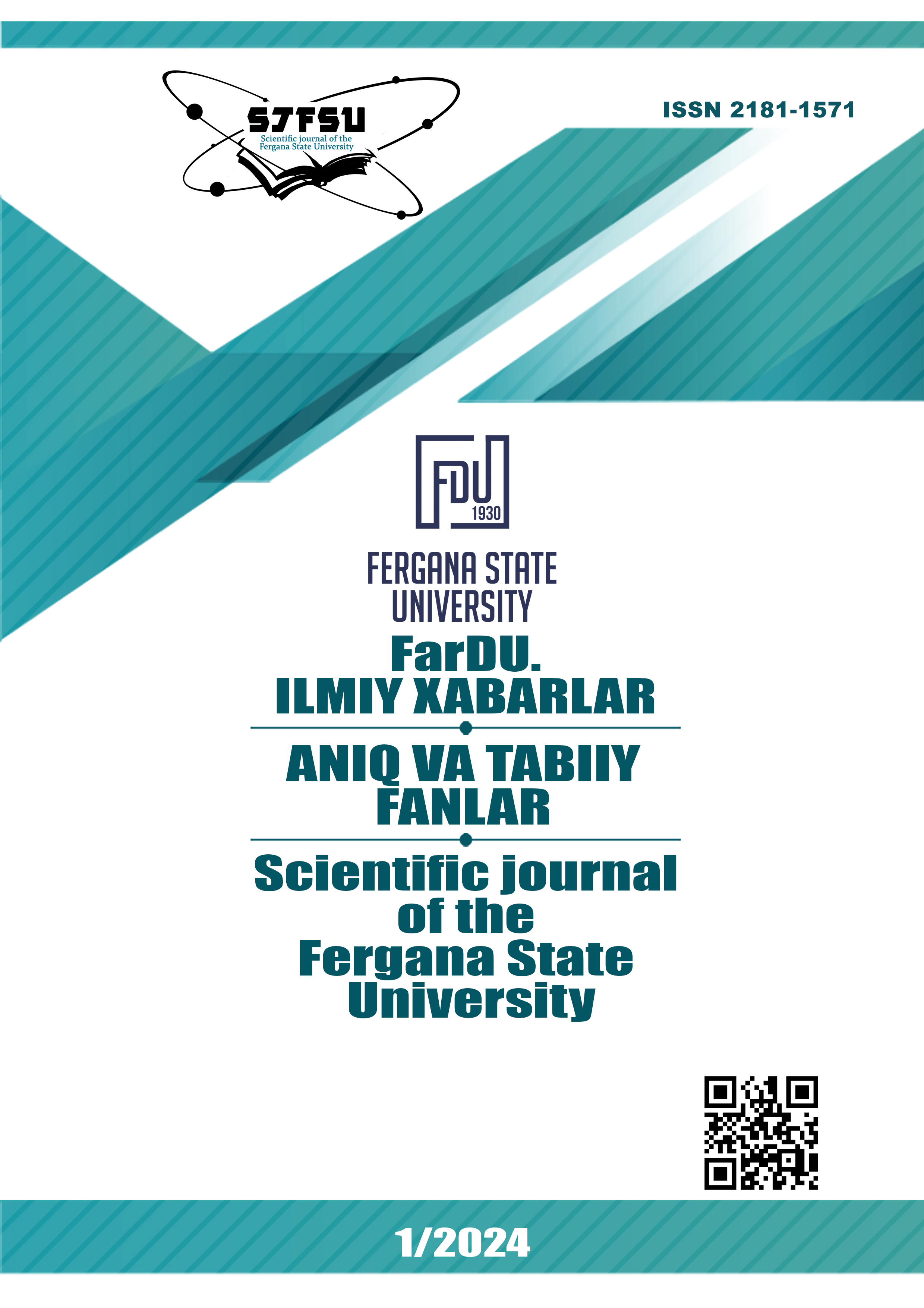CAUSES OF SOIL EROSION IN UZBEKISTAN AND FACTORS AFFECTING EROSION
Keywords:
soil, erosion, ecology, natural resource, terrace.Abstract
Uzbekistan, a landlocked country in Central Asia, faces significant soil erosion challenges driven by various natural and anthropogenic factors. The issues of soil erosion protection are becoming a global problem in the world and in Uzbekistan. With its predominantly arid to semi-arid climate, extensive agricultural practices, and limited water resources, the country is particularly susceptible to soil erosion. In this article, we will examine the problems of soil erosion in Uzbekistan, their causes, effects, and efforts to solve this important environmental problem.
References
Gafurov, M., Mukhamedjanov, M., & Bekchanov, M. (2017). Climate change and land degradation in Uzbekistan: Need for adaptation. Environmental Earth Sciences, 76(18), 634.
Ismailov, A., Vlek, P. L., & Martius, C. (2013). Assessing land use change and desertification in Uzbekistan using satellite imagery. Environmental Earth Sciences, 68(1), 205-216.
Tashpulatov, B., Warrington, D., Tashpulatov, N., & Aliev, K. (2016). Wind erosion and deflationary desertification in Uzbekistan. Environmental Earth Sciences, 75(4), 309.
Kurbanov, E. M., Holzworth, D., Ibragimov, N., & Lusch, D. P. (2009). A review of environmental issues in Uzbekistan. Environmental Management, 44(5), 847-858.
Abdullaev, I., Rakhmatullaev, S., Azizov, M., & Lamers, J. P. (2013). Socio-environmental impacts of small reservoir development in Fergana Valley, Uzbekistan. Physics and Chemistry of the Earth, Parts A/B/C, 61, 38-45.
Khamzina, A., Lamers, J. P., & Vlek, P. L. (2010). Soil salinity and exchangeable sodium percentage in cotton-growing soils of the lower Amu Darya River basin, Uzbekistan. Agriculture, Ecosystems & Environment, 139(4), 632-641.
Eshchanov, B., Frör, O., Khamzina, A., Lamers, J. P., & Vlek, P. L. (2019). Adoption and disadoption of sustainable land management practices in Uzbekistan: Scale effects and need for context-specific solutions. Land Use Policy, 80, 8-18.
Ibragimov, N., Hockmann, H., & Rungsuriyawiboon, S. (2012). An impact analysis of trade liberalization on Uzbekistan's agriculture. Agricultural Economics, 43(3), 263-279.
M. Juliev, A. Pulatov, S. Fuchs, and J. Hübl, ‘Analysis of Land Use Land Cover ChangeDetection of Bostanlik District, Uzbekistan’, Pol. J. Environ. Stud., vol. 28, no. 5, pp. 3235–3242, May 2019, doi: 10.15244/pjoes/94216.
Juliev M, Gafurova L, Ergasheva O, et al. Land Degradation Issues in Uzbekistan. In: Al-Quraishi AMF, Mustafa YT, Negm AM (eds) Environmental Degradation in Asia. Cham: Springer International Publishing, pp. 163–176.
Gafurova L, Juliev M. Soil Degradation Problems and Foreseen Solutions in Uzbekistan. In: Dent D, Boincean B (eds) Regenerative Agriculture. Cham: Springer International Publishing, pp. 59–67.
Juliev M, Matyakubov B, Khakberdiev O, et al. Influence of erosion on the mechanical composition and physical properties of serozems on rainfed soils, Tashkent province, Uzbekistan. IOP Conf Ser: Earth Environ Sci 2022; 1068: 012005.
Downloads
Published
Issue
Section
License
Copyright (c) 2024 Scientific journal of the Fergana State University

This work is licensed under a Creative Commons Attribution-NonCommercial-NoDerivatives 4.0 International License.

